Grand Central Terminal aka Grand Central Station is a quintessentially “New York” landmark and today we say Happy Birthday GC! Today 100 years old, Grand Central Station is the bustling commuter rail terminal at 42nd Street and Park Avenue in Midtown Manhattan. Built during the heyday of American rail travel when popularity of long-distance travel soared, Grand Central is the largest train station in the world.
By the numbers: Grand Central Station has 44 platforms, with 67 tracks along them on two levels, both below ground, with 42 tracks on the upper level and 26 on the lower. The total number of tracks along platforms and in rail yards exceeds 100 and the terminal itself covers an area more than 48 acres.
The Beaux-Arts style and architectural design for Grand Central was an innovative milestone in transit-hub design and continues to influence designers with concepts such as the use of ramps instead of staircases, in order to ease passengers’ luggage transport through the facility, and the wrapping of Park Avenue around the Terminal above the street, in order to create a second level for picking up and dropping off of passengers.
 Some interesting facts about Grand Central Station:
Some interesting facts about Grand Central Station:
- Until 1991 the terminal served Amtrak, which then moved to nearby Penn Station once the Empire Connection was complete.
- Although the official name is “Grand Central Terminal” (and has been since 1913), most people refer to it as “Grand Central Station” or simple, “Grand Central.”
- According to Travel + Leisure in 2011, Grand Central Terminal is “the world’s number six most visited tourist attraction,” bringing in approximately 21,600,000 visitors annually.
- Grand Central Terminal was listed on the National Register of Historic Places and declared a National Historic Landmark in 1976.
- The tracks are numbered according to their location — the upper level tracks are numbered 11 to 42 east to west. The lower level has 27 tracks, numbered 100 to 126, east to west, though only tracks 102–112, and 114–116 are currently used for passenger service. Odd numbered tracks are usually on the east side (right side facing north) of the platform; even numbered tracks on the west.
- Track 14 is only used for loading a garbage train.
- A “secret” sub-basement known as M42 lies under the Terminal, containing converters used to supply DC traction current to the Terminal. The exact location of M42 is a closely guarded secret although it has been shown in a handful of television specials on the History Channel and National Geographic.
- During World War II, Grand Central was one of the most protected and sensitive facilities in the country — the rotary converters used at the time could have easily been crippled by a bucket of sand — and its sabotage would have impaired the troops ability to navigate the East Coast. During the time, it was said that any unauthorized person entering the facility risked being shot on sight.
- The four-faced clock on top of the information booth in the main concourse is one of the most recognizable features of Grand Central. Each of the clock faces is made from opal. Sotheby’s and Christie’s estimate the value of each of the four clock faces (made from opal) to be between $10-20 million. In fact the world’s largest Tiffany clock, measuring 14 feet in diameter, the iconic meeting place is at the center of the sculptural group at Grand Central’s 42nd Street entrance and contains a hidden, spiral staircase leading to the Lower Level.

- In 1998, a 12-year restoration of Grand Central revealed the original 1912 mural ceiling in the Main Concourse, designed in part and painted by French artist Paul Cesar Helleu and Charles Basing, depicts the Mediterranean sky during the October to March zodiac and features 2,500 stars. Notice two oddities: the sky is backwards, and the stars are slightly displaced. One explanation is that the constellations are backwards because the ceiling is based on a medieval manuscript that visualized the sky as it would look to God from outside the celestial sphere. And the stars are displaced because the manuscript showed a (reflected) view of the sky in the Middle Ages and since then the stars shifted due to the changes in equinoxes. Most people, however, simply think that the image was reversed by accident.
- There is a small dark circle on the ceiling above the image of Pisces and Historical Preservation stated that this hole remain as is as a testament to the many uses the Terminal’s had over the years. In this case, it was in 1957 and Grand Central housed an American Redstone missle in reaction to the Soviet launch of Sputnik. With no other way to erect the missile, the hole was cut so the rocket could be lifted into place.
- Grand Central Station has played roles in several dozens of novels, film and television productions over the years, including Carlito’s Way, Men in Black, Madagascar, The Prince of Tides, Revolutionary Road, The Avengers, Friends with Benefits, the 1950’s series Mama, starring Peggy Wood and Rosemary Rice, and on and on.
Visit www.grandcentralterminal.com for more fun facts and history.
* Courtesy Photos


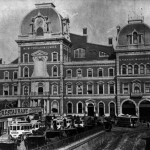
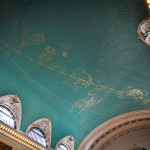
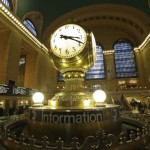
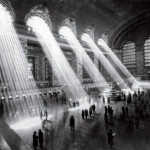
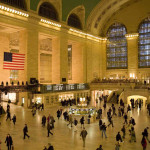
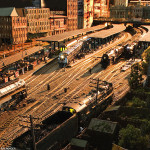
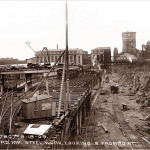
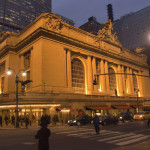
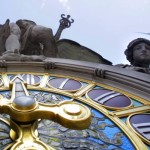
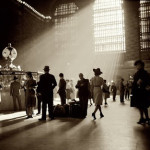
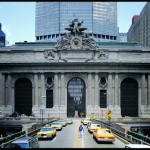
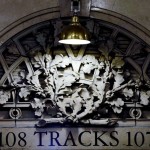
 Subscribe to our email to get the latest news, travel tips, tricks of the trade, and our most recent posts delivered straight to your inbox monthly.
Subscribe to our email to get the latest news, travel tips, tricks of the trade, and our most recent posts delivered straight to your inbox monthly. 